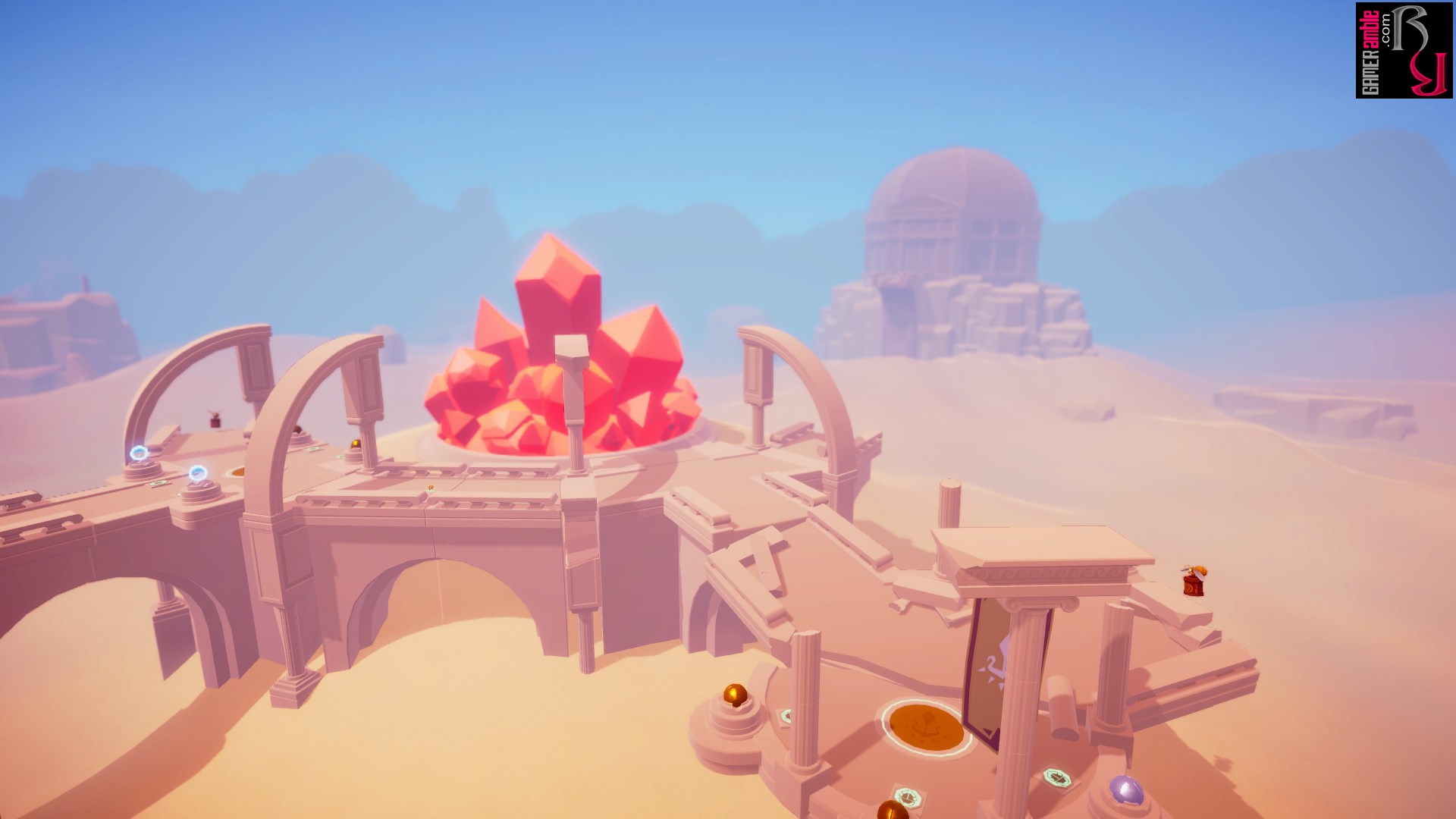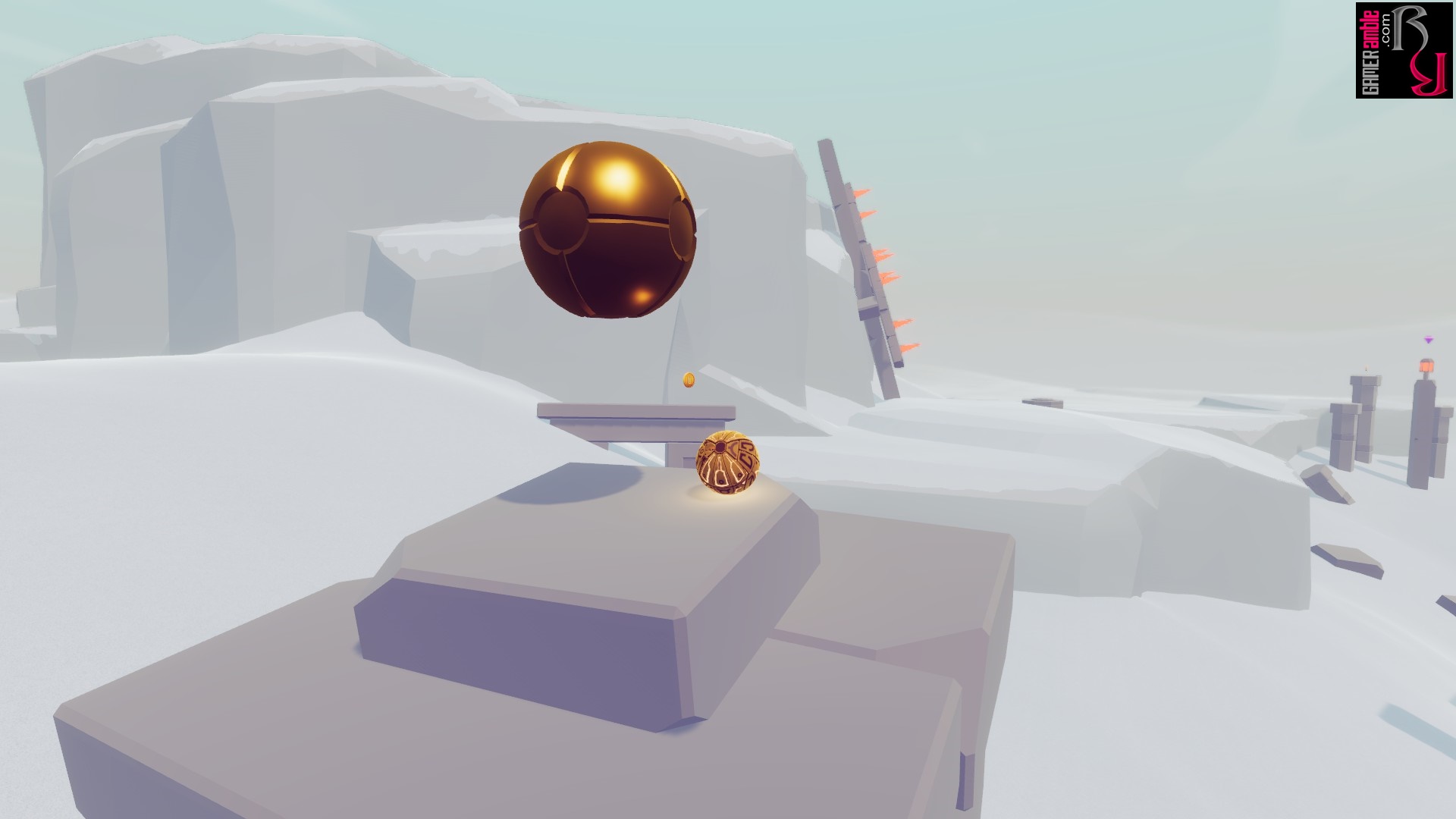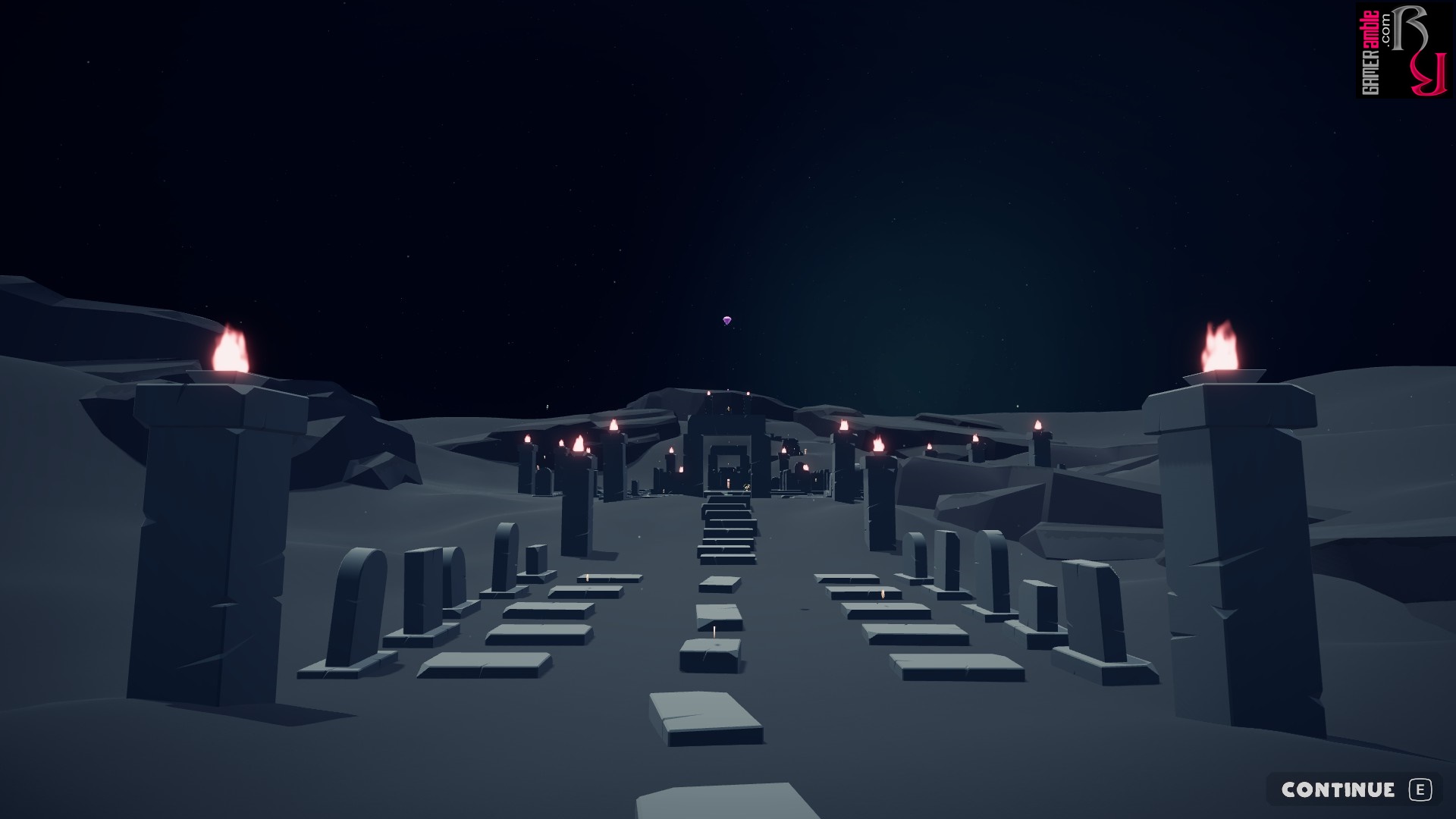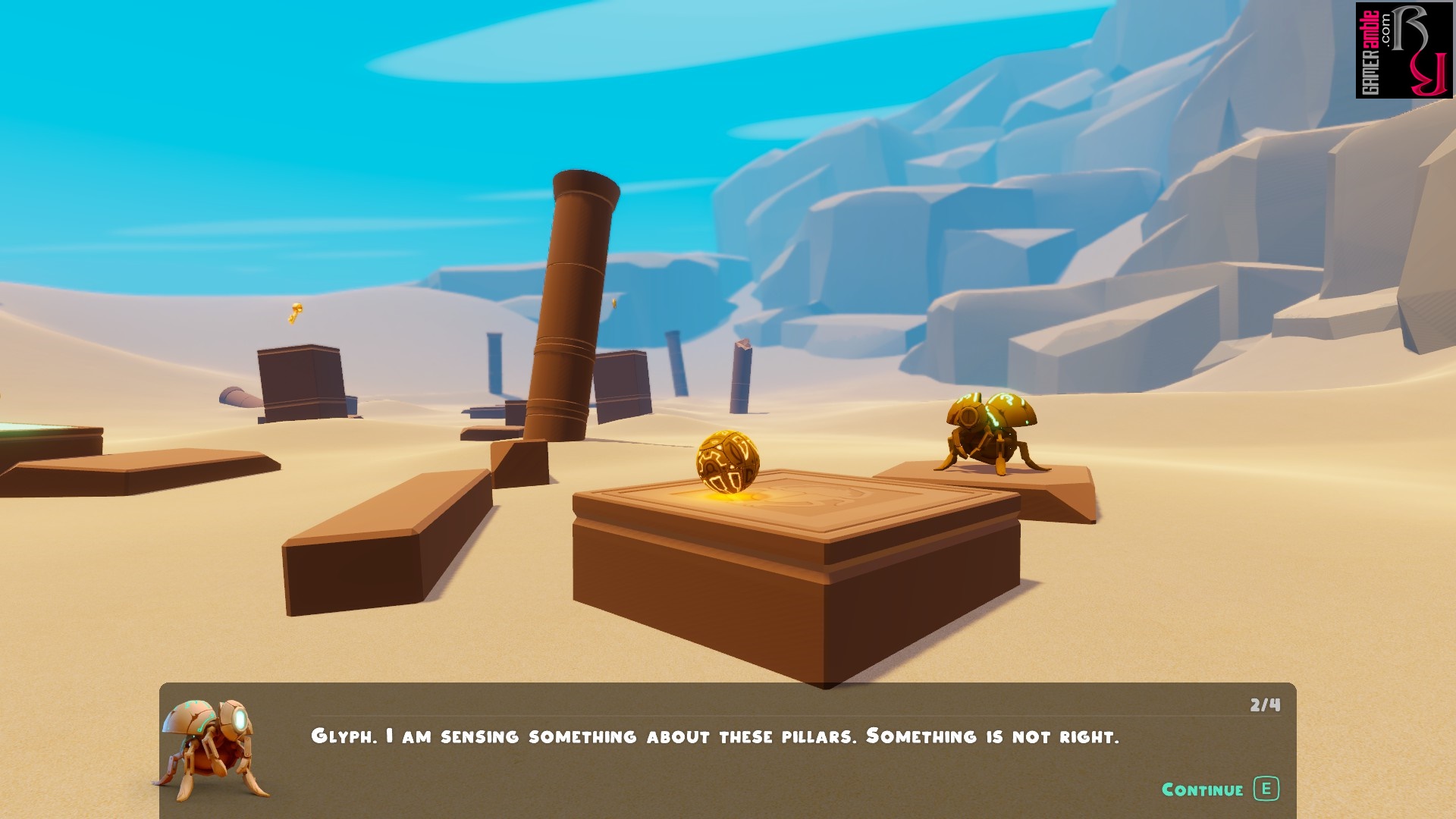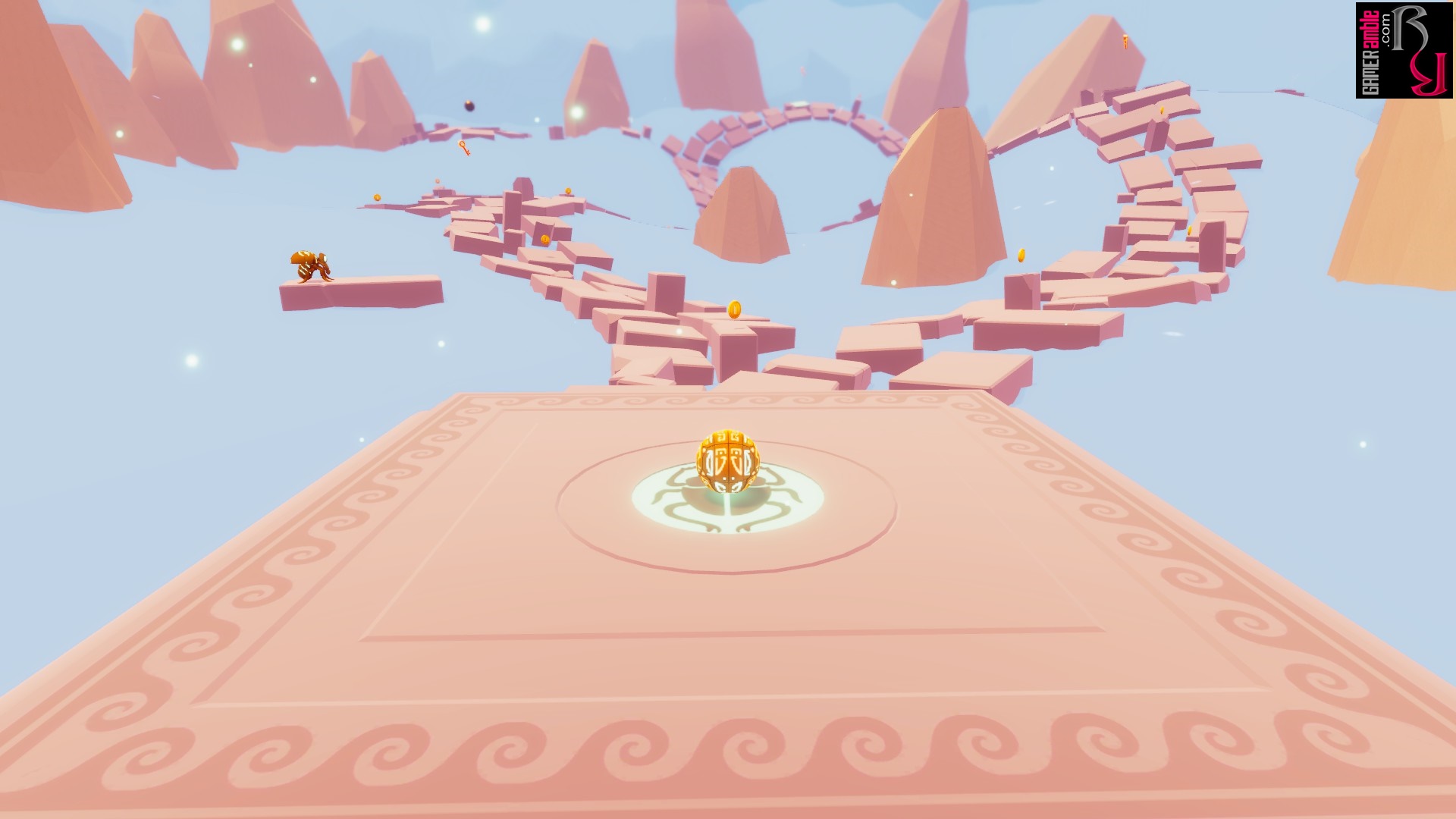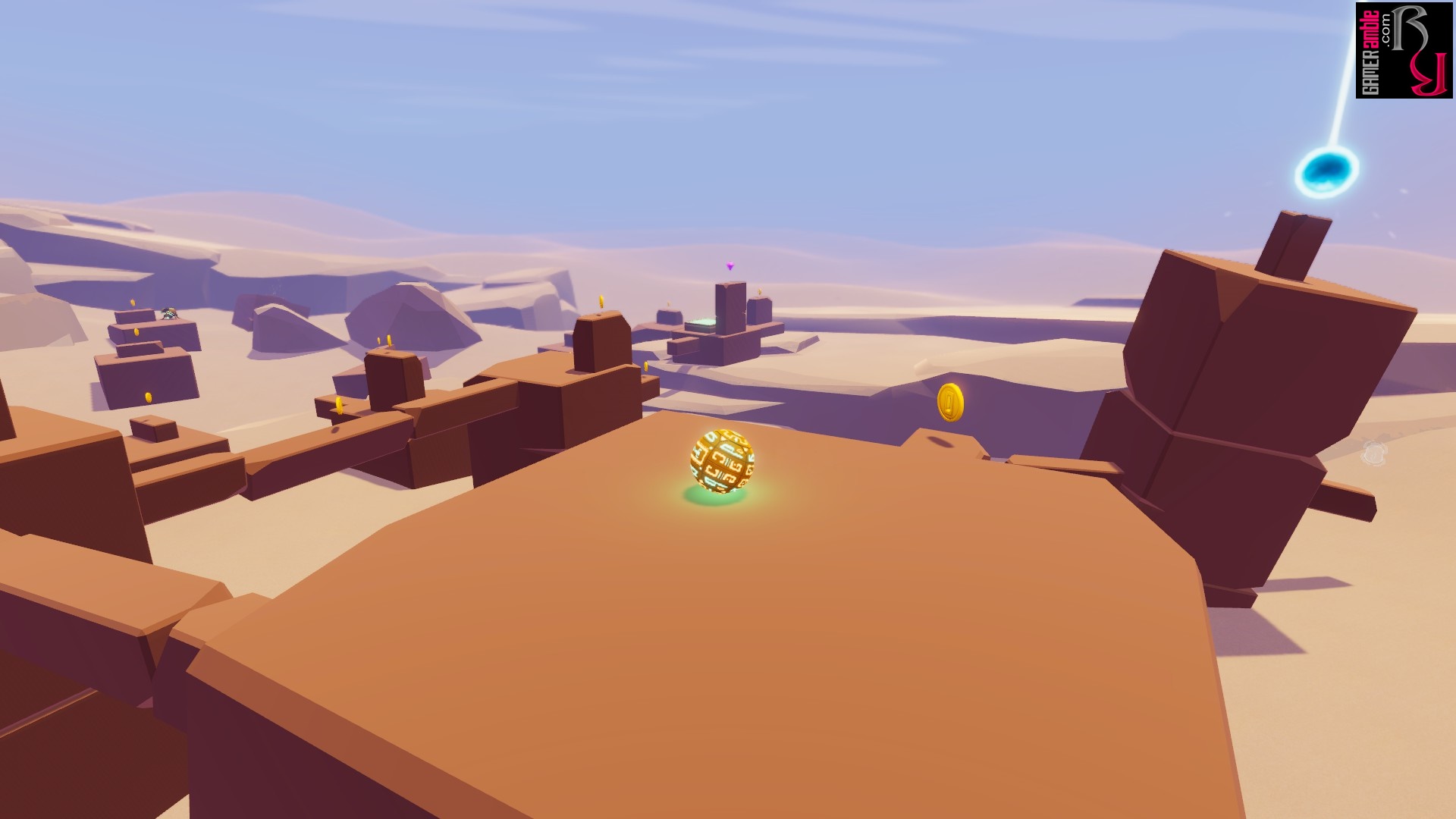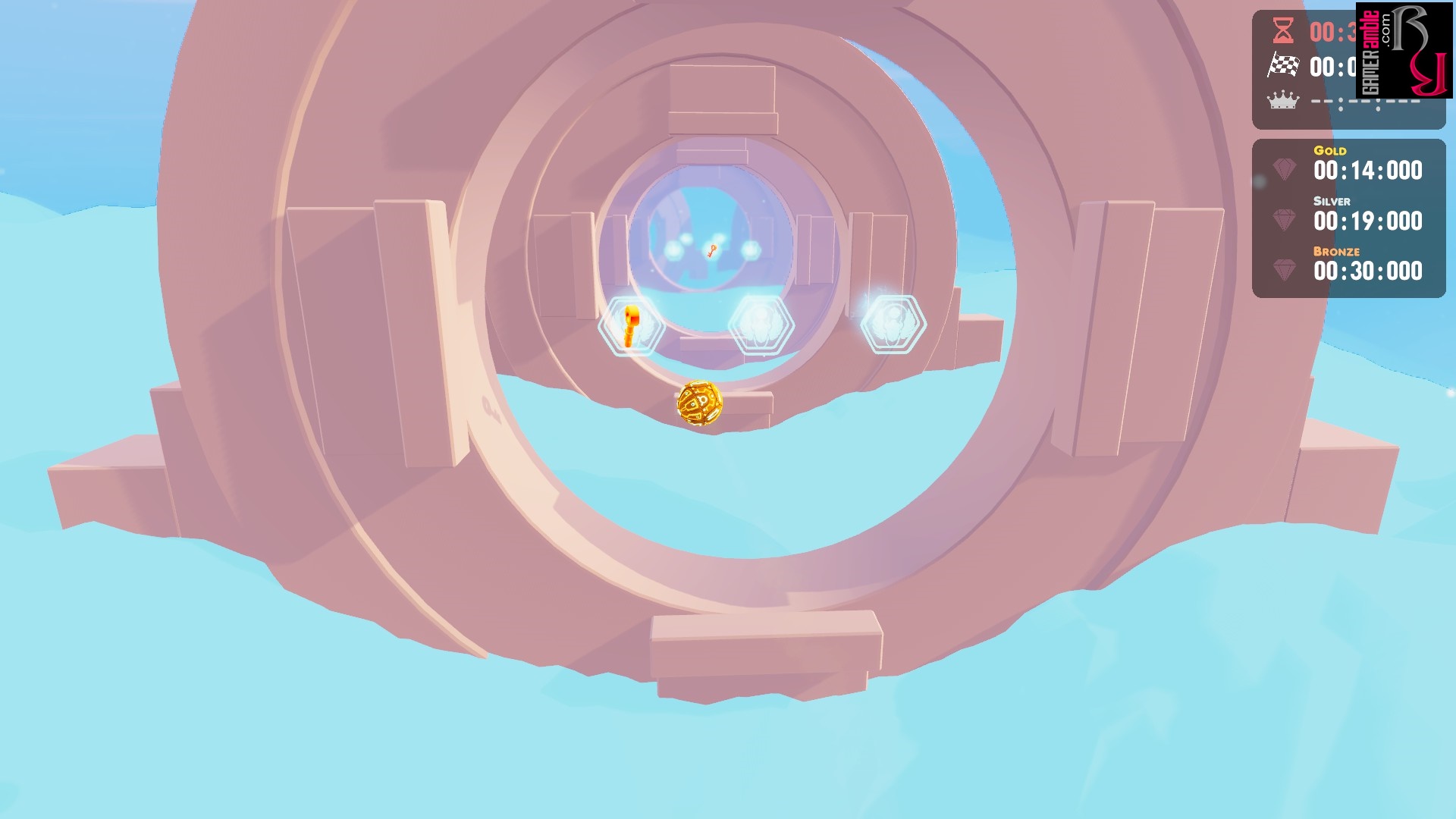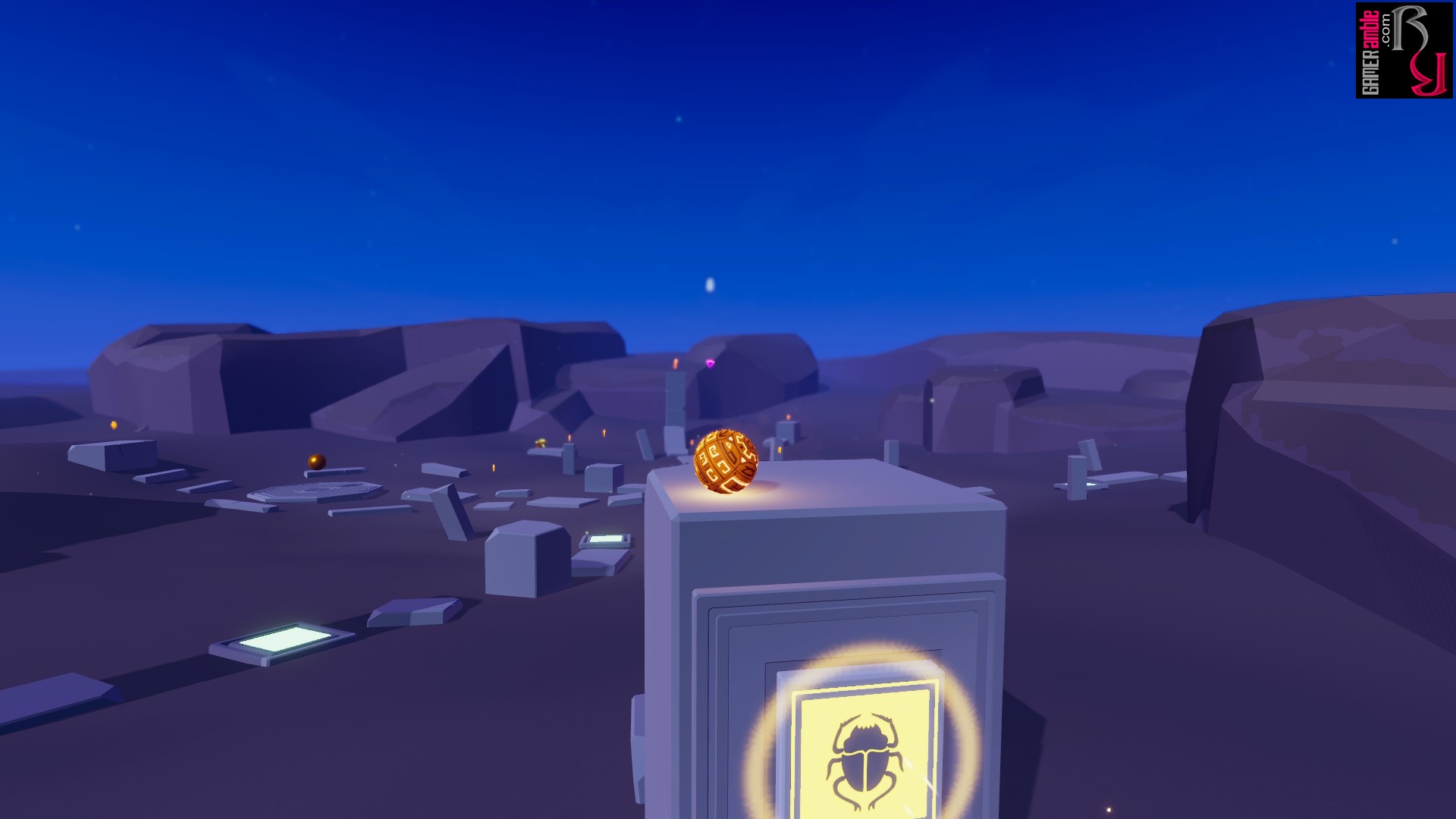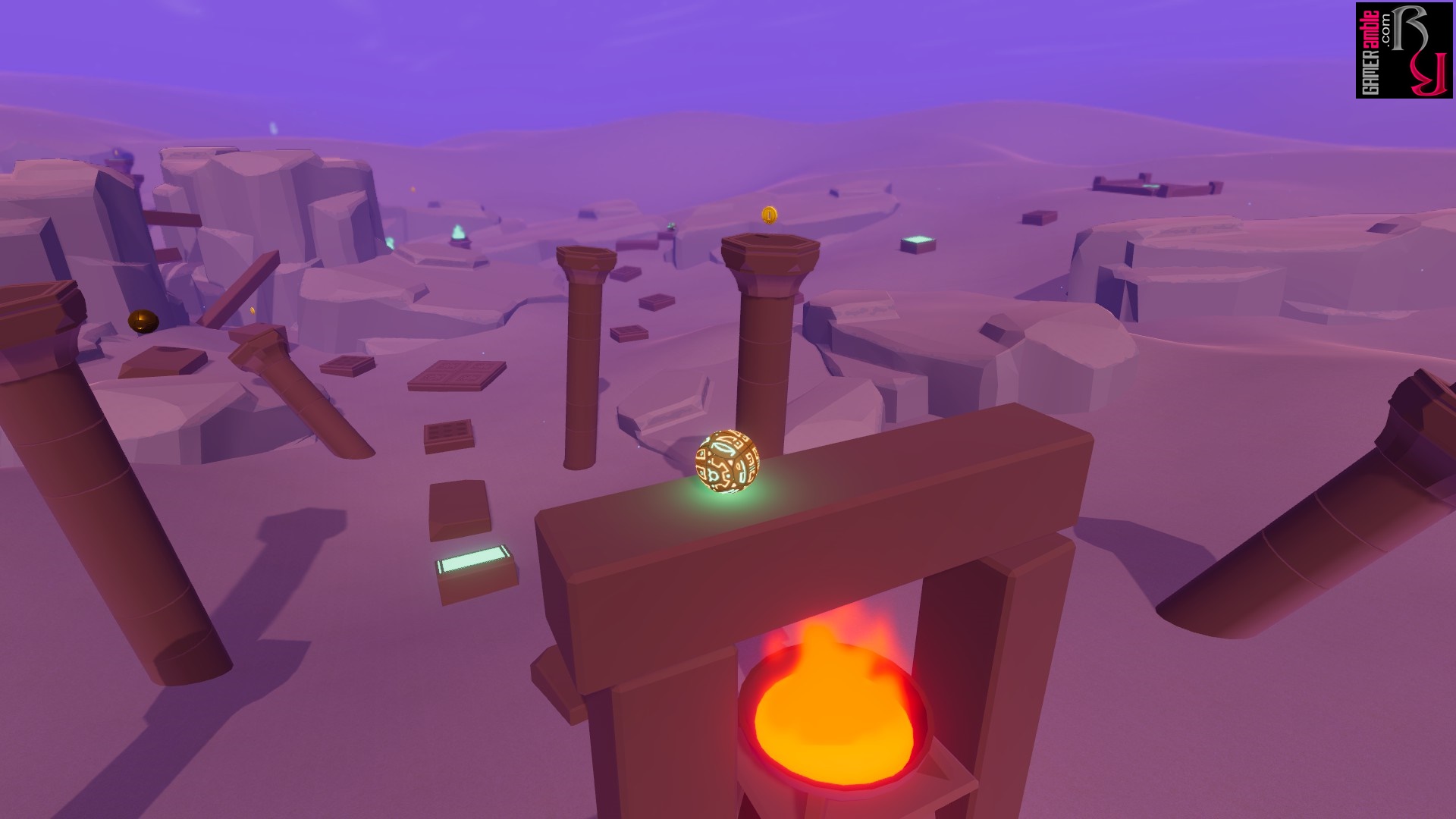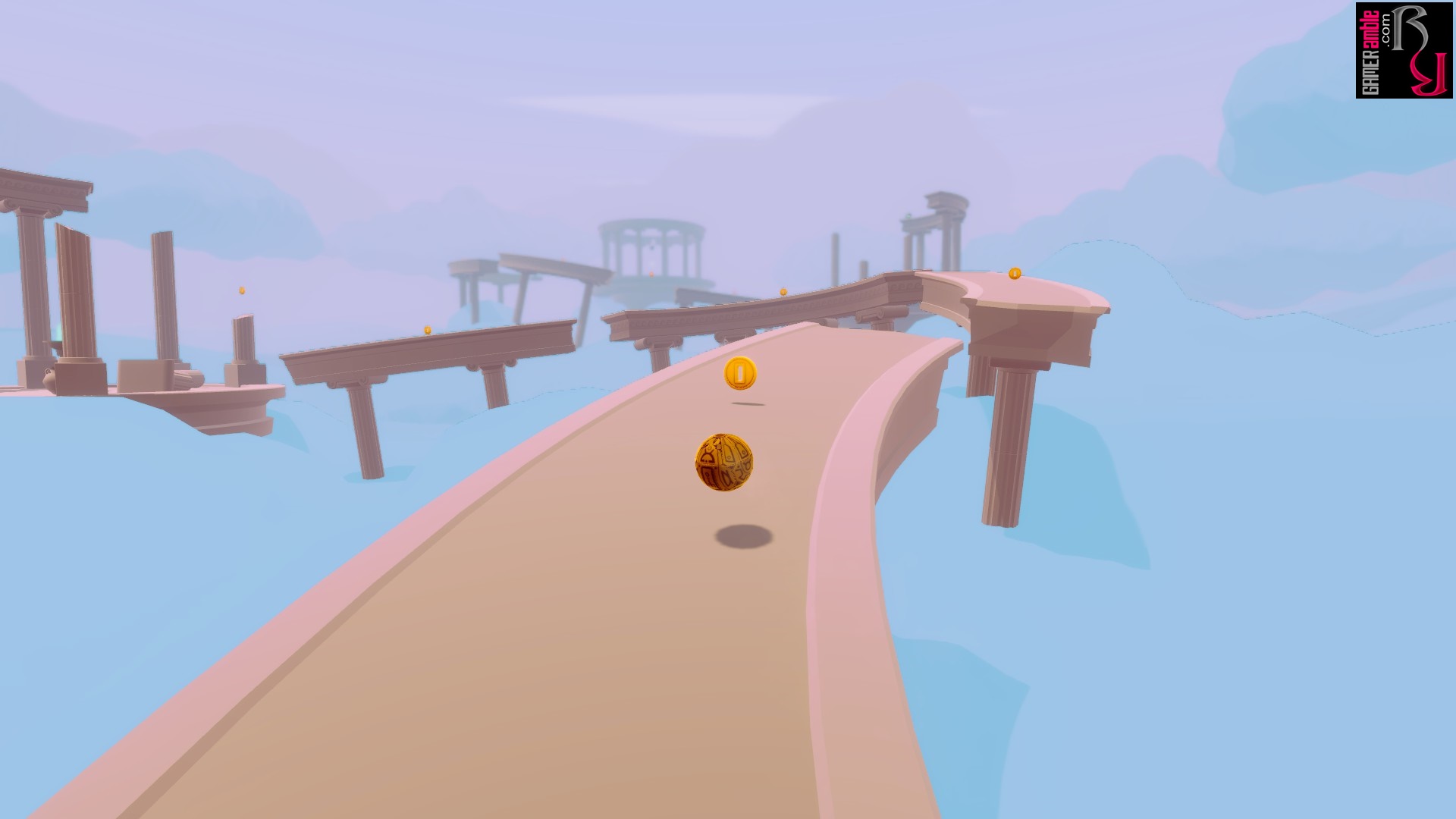Glyph
Developer: Bolverk Games | Publisher: Bolverk Games | Release Date: 2021 | Genre: Platform / Adventure / Indie | Website: Official Website | Purchase: Steam
It’s hard to tell from the toxic sands and broken ruins, but the Temple City of Aaru used to be a beautiful and prosperous place. Unfortunately, runaway technology caused its downfall, but there is still some hope in this dying world. A small mechanical scarab, named Glyph, has been awoken to cleanse the corrupted Heart of Creation. To do so, players must guide Glyph through the ruins of the ancient civilizations and gather the lost power gems. It is only after restoring Aaru that Glyph will be able to face the source of the corruption and hopefully save civilization.
Saving the world is nothing new, but Glyph is not your typical platform hero. The tiny scarab’s default form is a mechanical sphere, which makes traversing platforms a little more nerve-wracking. Of course, Glyph is not the first game to use a ball with momentum for its protagonist, but it is by no means derivative. While the game features an interesting backstory, most of it is conveyed via speech bubbles by a fellow Scarab named Anobi. These can easily be ignored by players who are only interested in the challenge, but learning more about the world does spice things up a bit.
After being woken up by Anobi and informed about the state of the world, players have to complete a series of tutorials that covers all the basics. It is rather lengthy as far as tutorials go but essential as Glyph will need every trick at its disposal to conquer the challenges in the game. Upon completing the tutorial, players are taken to the Temple City of Aaru, which serves as the hub for the game. Here, players can use the items such as coins, gems, and golden scarabs collected during levels to unlock new areas and levels. Levels are split up into Time Trials and Exploration, with the latter featuring various levels of difficulty.
The primary gameplay loop in Glyph consists of selecting a level and then collecting all the keys to open an exit portal. Along the way, coins and gems can be found, which must be grabbed to unlock additional levels. Collecting all the coins reveals a golden scarab, which can be collected to unlock new Time Trial levels. Unlike the exploration levels where you can roam around at your leisure, the time trial levels are fast-paced arcade-like levels where time is of the essence. Beating the Gold, Silver, or Bronze times for the time trials rewards players with gems, but the difference between victory and failure is often a matter of seconds. The time trial levels are geared more towards speedrunners and offer a quick, adrenaline-fueled break from the more tranquil exploration levels.
The exploration levels are not without edge-of-your-seat moments either, though. While they are relatively short, there are no mid-level checkpoints, and touching the sand at any point will instantly destroy Glyph. If this happens, all previously collected keys are lost, and players are returned to the start of the level. Thankfully, all the gems and coins that have been collected are not removed, but players must complete the level to retain them. If this wasn’t enough, each exploration level of Glyph also houses a secret skin. Talking to Anobi, who can be found on each of these levels, will reveal a clue to the whereabouts of a switch. Finding and pressing this switch reveals the location of the skin, but the real challenge is getting to it. These skins are purely cosmetic and completely optional but give completionists something extra to aim for. Bolverk Games could easily have turned these skins into microtransactions, so kudos to them for rewarding players instead of fleecing them for extra cash.
Glyph features a very minimalist art style, but it matches the lonely and desolate feel of the game perfectly. All of the levels are set in sand-swept landscapes with endless dunes and mountains stretching away in the background. The various ruins that serve as the platforms in the game use simple textures and shading, which looks good and helps with traversal. There is never any doubt if something can be touched or not, and the draw distance makes the coins on the horizon all the more enticing. With more than 80 levels in the game, the developers also use different times of the day to introduce some visual variety. The levels that take place at night or dusk are some of the prettiest in the game as you navigate through the cold, empty ruins under a starry canopy. Glyph itself is also a great protagonist despite being a sphere in its default form. It only reveals its scarab shape when using its glide ability, but players can also alter its look entirely by unlocking the secret skins.
The levels in Glyph are not very long, but players could end up replaying them many times over, depending on their skill level and desire to find everything. Thankfully, the music is good enough that it never becomes annoying even on your umpteenth attempt. The tunes that play during the exploration levels enhance the desolate feel of the game, and the vivid sound effects add some tension to the platforming. Glyph doesn’t feature any form of voice acting, but this doesn’t detract from the experience.
While the game can be played with a controller, we favored a keyboard and mouse as it allows for superior camera control. Glyph is a more traditional platformer than similar games starring spherical protagonists, so there is a much larger focus on jumping and verticality instead of simply rolling around flat surfaces. The fact that Glyph has momentum and must often pull off different moves in quick success also requires a lot of coordination. Glyph can do everything from ground pounds and double jumps to wall-jumping and gliding. Thankfully, the game displays an indicator showing where Glyph will land while airborne, making it easier to pull off precise jumps. Controlling Glyph can be challenging, but players can retry levels indefinitely, and restarts are usually instant, which alleviates some frustration. The way that the hub is set up also means players can skip levels that they are struggling with or come back to them later when they have a bit more practice and experience.
Not many games can boast about being appealing to both casual players and hardcore speedrunners, but Glyph is definitely one of them. Taking your time while exploring the levels is just as fun as throwing caution to the wind and taking every risk you can to shave seconds off your time. Don’t let its looks fool you, Glyph is very much a platformer at heart, so the focus is on balance and precision instead of puzzle solving. It is the type of game that you can play in short bursts and have fun if you have a busy schedule, but it is also addictive enough that you’ll keep coming back for more. Casual players might not enjoy the Time Trials as much as the exploration levels, but completing them can be very satisfying. While the game does have a bit of a learning curve, especially with some of the hazards introduced later on, it is an enjoyable and unique experience that comes highly recommended.
System Requirements
- OS: Windows 7 SP1 or newer
- Processor: Intel Core i5 4590 or AMD FX 8350 or greater
- Memory: 4 GB RAM
- Graphics: NVIDIA GTX 970 (AMD Radeon R9 290)
- DirectX: Version 11
- Storage: 1 GB available space
- Sound Card: Any
- OS: Windows 10
- Processor: Intel Core i7 4790K
- Memory: 8 GB RAM
- Graphics: NVIDIA GTX 970 (AMD Radeon R9 290)
- DirectX: Version 11
- Network: Broadband Internet connection
- Storage: 1 GB available space
- Sound Card: Any



